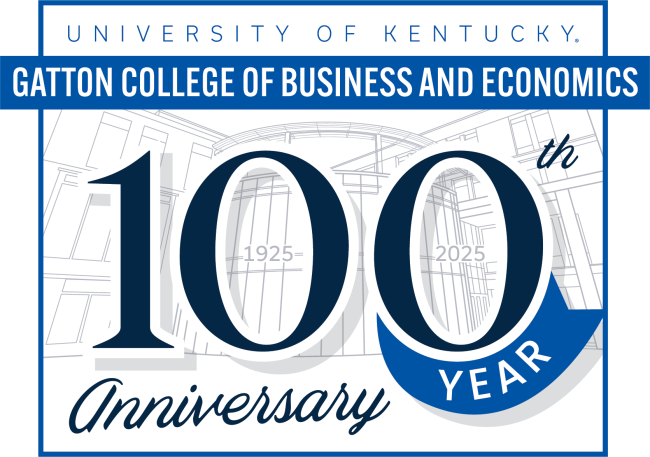Building on the previous work with school disctircs and using school-level data, this paper discusses the estimated expected level of school-level performance using district-level fixed effects. From this broad range of student outcomes, family and community backgrounds, and school characteristics, we identify schools that have performed better than expected—which we refer to as “bright spots.”
CBER Publications Research Reports
The Economic Impact of Diabetes in Kentucky
Michael W. Clark, Jenny Minier, Charles Courtemanche, Bethany L. Paris, Michael T. Childress
Diabetes represents a growing health concern for the nation and Kentucky. It is a chronic condition that causes blood sugar levels to rise and contributes to other serious health conditions such as heart and kidney disease. The U.S. Centers for Disease Control and Prevention lists diabetes as the 7th leading cause of death in the nation. The disease imposes significant costs on the country’s economy. The American Diabetes Association estimates that the U.S. spends $237 billion annually on diabetes-related health care. In addition, diabetes also adversely affects the nation’s workforce. As the disease progresses, individuals may find it more difficult to work. This can reduce employment, productivity, wages, and tax revenue.
The Effects of Opioids on Kentucky’s Workforce
Michael W. Clark, Jenny Minier, Charles Courtemanche, Bethany L. Paris, Michael T. Childress
Opioid abuse represents a significant and growing public health issue for both the nation and Kentucky. In 2016, opioids contributed to more than 62,000 deaths nationally and 1,406 deaths in Kentucky. National studies have placed the societal costs of opioid abuse at $55.7 billion in 2007 and $78.5 billion in 2013 (Birbaum et al. (2011) and Florence et al. (2016)). These costs included increased health care expenditures, higher criminal justice costs, and lost earnings due to reduced employment and premature deaths. The While House Council of Economic Advisors (2017) estimated the societal costs of opioid abuse to be much higher when the value of lives lost are included. They estimated the cost of opioid abuse to be $504 billion in 2015.
Growth in opioid abuse creates fiscal pressures for state and local agencies by increasing the needs for foster care, health care, criminal justice programs, and many other types of public services. Because opioid abuse can also reduce employment and earnings, it adds to these fiscal pressures by reducing tax collections.
Kentucky School Districts as Educational Bright Spots
Michael T. Childress
Every year a select group of Kentucky school districts perform better than expected on measures of educational achievement. These measures include things like the percentage of elementary students who achieve proficiency or distinguished in reading, or the proportion of less‐advantaged middle school students who show a similar level of competency on the math assessment. Understanding the reasons for better‐than‐expected performance is fundamentally important. While our analysis does not address the question of why students perform better than expected, our results can be used to inform further inquiry on that question. Our work is best viewed as a statistical sieve designed to narrow the list of candidate districts worthy of closer examination. By subjecting a school district to closer scrutiny, one can gain a sense of confidence about identifying the constellation of factors facilitating exceptional performance.
An Evaluation of How Repealing West Virginia's Prevailing Wage Law Affected the Cost of Public Construction
Michael W. Clark, Kenneth Tester
This study compared school construction costs before and after the 2015 changes to the prevailing wage laws in West Virginia. The study uses data provided by the School Building Authority of West Virginia (SBA). The data suggests that school construction costs increased in the years prior to the legislative changes and decreased after. Comparing projects bid with and without prevailing wages since 2013 suggests construction costs per square foot decreased by 7.3 percent since the removal of the wage requirement. However, the magnitude of the decrease depends on the time-period examined and the individual schools included in the analysis. States that border West Virginia did not experience similar decreases in the costs of school construction during this time.
The Economic Impacts of Land Use Policies in Lexington, Kentucky
Christopher Bollinger, William H. Hoyt, Michael W. Clark
Every five years, Lexington-Fayette Urban County Government’s Planning Commission adopts a comprehensive plan detailing goals and objectives that guide the city’s land use planning. Maintaining the city’s urban service area and preserving its rural and agricultural areas are integral parts of this plan. Within the urban service area, land is zoned to permit various types of urban uses such as residential, commercial, and industrial use. Land outside the urban service area is subject to several land use policies designed to preserve the rural characteristics of these areas. This report examines the effects of Lexington’s land use policies and specifically its urban service area.
A Measure of the Economic Impact of Keeneland Racing and Sales on Lexington-Fayette County
Christopher R. Bollinger
Keeneland is an important Lexington Institution. This report shows that Keeneland draws individuals into Fayette County who spend money not only at Keeneland but in the city itself. We measure the economic impact of this spending on the local economy. For our initial study, we considered spending by patrons at the 2014 Fall Meet, the September Yearling Sale and the November Breeding Stock Sale. Based upon these findings, we were also able to assess the impact of the Spring Race Meeting, January Horses of All Ages Sale and the April Two-Year-Olds in Training Sale.
The Replacement of the Brent Spence Bridge: Tolls, Commuting Patterns and Economic Activity in Northern Kentucky
Christopher R. Bollinger, Derrick Jenniges
In this report, we investigate the impact of proposed tolls levied on users of the replacement for the Brent Spence Bridge, including impacts on commuting patterns and overall economic activity in Northern Kentucky. Overall, consistent with economic literature, the economic impact of the improved bridge will be positive and the toll, while slightly mitigating that impact, is likely to have only small effects on commuting patterns, trucking and retail and food service industries.
- We estimate that the net impact of the new bridge and the toll under our estimated likely scenarios would reduce commuter traffic by less than 2%, and possibly increase traffic by 1%.
- We estimate that the net impact of the new bridge and the toll under our likely scenarios would decrease trucking by less than 3% for trips made over the bridge: only a portion of overall trucking in the region.
- Our results suggest that while there may be some over-river shopping in Northern Kentucky, there are also consumers in Northern Kentucky shopping in Cincinnati: while the toll may reduce trips, it is unlikely to have an impact on retail or accommodation and food service in the region.
- We were also asked to investigate the impact of the Davis-Bacon act on the overall cost of the bridge. We find that the construction costs may be 10 to 15% higher due to Davis-Bacon wage requirements.
Export Strength and Opportunities for Kentucky Industries
Christopher R. Bollinger, Derrick Jenniges
This project's primary goal is to quantify export strengths and opportunities in Kentucky industries. We measure export strength as the relative dollar value of exports per worker in four digit industries using U.S. dollar value of exports per worker as the base. Tables were prepared for total exports and a selection of 50 countries representing 98.5% of Kentucky exports and 93.2% of U.S. exports. In addition to the export index, a measure of industry strength based upon labor and comparisons to regional competitor states is provided.
- Industries with a low index value, either overall or for specific countries, present opportunities for exports as they reflect low exports relative to the rest of the country and controlling for industry strength and overall U.S. exports of that industry to that country.
- Industries with a low industry strength index may be opportunities for Kentucky Economic Development Cabinet intervention. These smaller industries may lack resources necessary to establish trading agreements. Broad intervention on the part of the Cabinet may overcome this lack of resources and lead to higher exports and industry growth.
- Some focus on the dollar value of exports per worker is warranted and these data are provided for the U.S. as a whole. These industries may present opportunities for high dollar value exports, which can lead to higher wages for workers.
Unlocking the Complexity of the Health Care System: Kentucky’s Health Navigators
Michael T. Childress
Health navigation comes in many forms. Sometimes it takes the form of helping an individual find the treatment, medication, or health services they need. Other times navigation takes the form of helping a patient overcome barriers of child care, finances, or transportation so they can see a doctor. In other cases navigation means working with patients to enhance health literacy so they comply with medical instructions and are not readmitted to a hospital. And sometimes health navigation entails lending an empathetic hand to patients under‐ going the rigors of cancer treatment.
Here we adopt a fairly broad definition of what constitutes “health navigation.” We include individuals, groups, and agencies that most would agree are health navigators. At the same time, in the course of this research we came across many individuals who view themselves as health navigators—even if the purists do not. In general we err on the side of inclusion and encourage readers to make their own judgments. We also estimate the underlying demand for navigation services across Kentucky and conclude that the need for navigation is likely greater than the existing capacity.
This work is a collaborative effort between the Foundation for a Healthy Kentucky, the University of Kentucky College of Communication and Information, and the Center for Business and Economic Research (CBER) in the Gatton College of Business and Economics.

